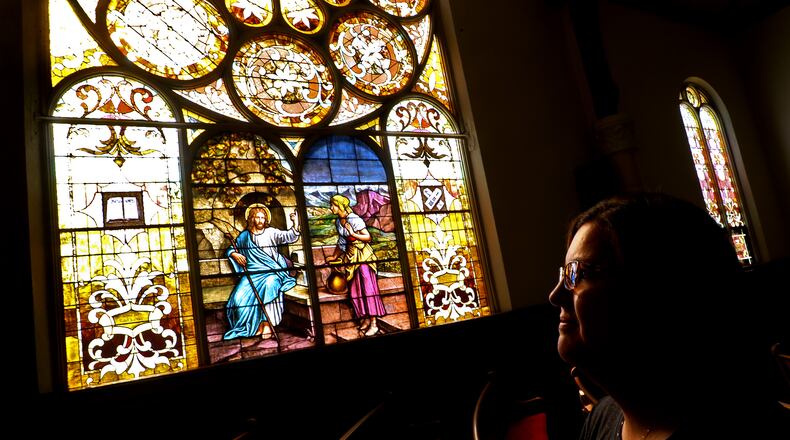St. John’s, located at 27 North Wittenberg Ave., invites anyone who was confirmed, married or associated with the church to join in the celebration from 11-1 p.m. and the general public to attend from noon to 2 p.m. Refreshments will be served.
John Detrick, a former Clark County Commissioner, was baptized and confirmed at St. John’s and remains active with the church, serving as an informal historian, a fitting role for a former history teacher. His association extends clear back to the 1880s when his grandmother arrived at Ellis Island from Germany and later worked here as an indentured servant.
“Today, we’re known as a church that reaches out to the community,” Detrick said. “We say ‘We’re growing where we’re planted.’”
As this was considered a land of opportunity, many immigrants came through Springfield, particularly Germans and it was one of several German-influenced churches in the city at the time. St. John’s Evangelical was established in 1845 on Fisher St., where National Road Commons Park and the Madonna of the Trail statue now reside.
Its growth brought the move to Wittenberg Ave. in 1897 as influential architect Charles Cregar was commissioned with its design, which is in the Romanesque Revival style. Cregar’s work is evident elsewhere with Springfield City Hall, St. Raphael Church, Asa Bushnell’s former house and the former Clark County Public Library, now known as the Warder Literacy Center among them.
“It was proud craftsmanship with large wood beams and arches. The attic is as big as the sanctuary,” said Detrick.
The German language was spoken from the pulpit during sermons, and despite the heritage of most parishoners, the congregation supported the U.S. during World War I according to Detrick. The church’s longest tenured pastor, Kay Glaesner, who served from 1948 to 1984, later helped more than 1,000 refugees from World War II move to the area in the years following.
Classrooms and a gym were added in the 1960s and 70s. In 2006, St. John’s Evangelical was added to the National Register of Historic Places due to its historically significant architecture, with the Turner Foundation providing assistance.
Glaesner was also part of a new trend that began in 1956 when the church began a long association with the Melody Drive-in, doing summer drive-in services, one of the area’s first to do so, and continuing through today. The most recent round of drive-in services ended in September and services returned to the church for the first time in months on Oct. 4.
Linda Anderson is a 50-year member of St. John’s and part of a three-generation family and now serves as a church council member.
“We are a family within a family here. We do a lot for the community,” she said.
St. John’s runs an outreach store and pantry, although temporarily closed as the man who ran it passed away a few months ago. The church also hosts the Springfield Kiwanis Club’s weekly meetings.
Another service is the Rainbow Table, where on Fridays from 11:45 a.m. to 1 p.m., a free hot meal is served and attendees also get one to take home, currently observing social distancing guidelines. This service, a collaboration with other area churches, has been running for about 30 years and is a symbol of the commitment to community.
Detrick won’t be surprised if St. John’s continues to celebrate landmark anniversaries into the future.
“The spirituality to relate to modern day issues will keep us going. Being a downtown church, we are there to reach out to our fellow citizens,” he said. “We hope the community will celebrate with us on Sunday.”
About the Author
